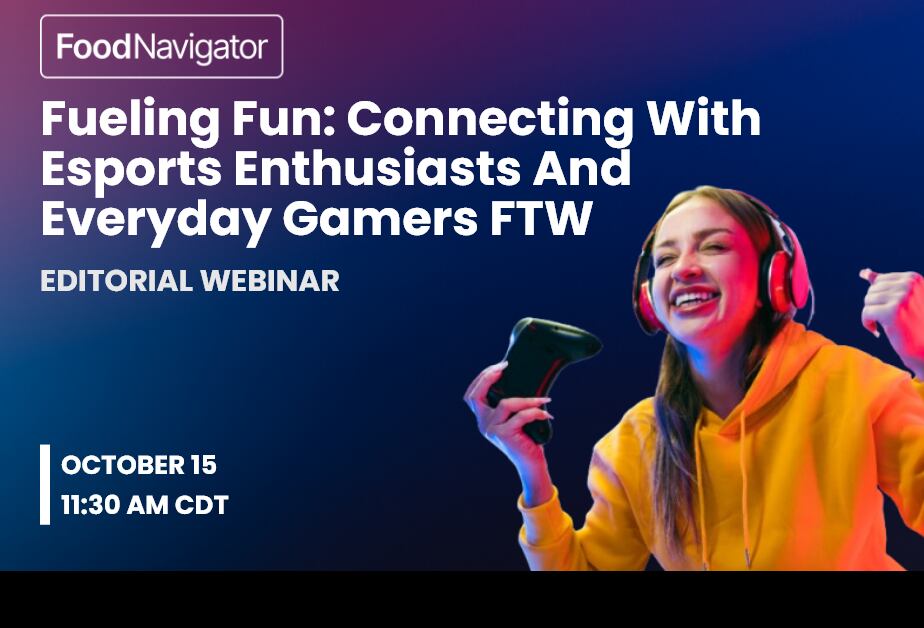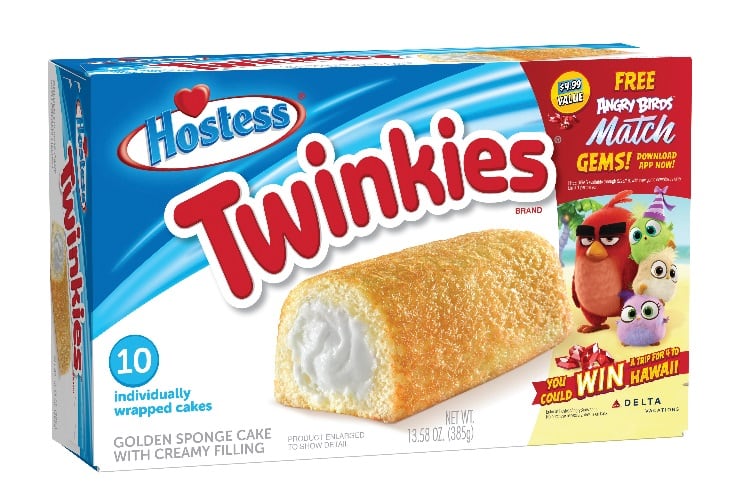Key takeaways:
- Gaming has become a $200bn snacking occasion that brands can’t afford to overlook.
- The most successful campaigns are those that feel authentic and part of the play experience.
- Don’t miss FoodNavigator-USA’s free October 15 webinar to learn how to connect with this high-energy gaming community.
Once, snacks were for lunchboxes and late-night movies. Now they’re the fuel behind all-night raids, streaming marathons, and global esports events. Gaming’s quietly become a $200bn powerhouse and brands are starting to treat it like the serious business it is.
Gamers aren’t a subculture anymore. They’re a mass market with influence that stretches far beyond consoles and keyboards. For snack companies, this isn’t just another demographic. It’s a living, breathing media channel where taste, identity and entertainment collide.
That’s why the world’s biggest brands are jumping in. Doritos is muting its crunch. Heinz is hiding inside Call of Duty. Even the makers of instant noodles are fielding their own esports teams. They’ve realized that if you want to reach younger consumers, you’ve got to meet them where they play.
And with more than half of Gen Z identifying as gamers, the stakes couldn’t be higher.
Level 1: Doritos tops the leaderboard
Doritos has been circling the gaming space for years. The brand’s triangular chips have turned up in Halo promos, livestream tournaments and enough memes to fill a Reddit thread. But 2023’s Doritos Silent campaign felt like a new level entirely.
It’s a PC app that filters out the sound of crunching during online play. Ridiculous? Sure. Smart? Definitely. It sparked headlines everywhere and reminded players that Doritos gets the joke. PepsiCo says about 85% of gamers already choose Doritos as their snack of choice – and this stunt sealed that dominance.
In China, the brand even let fans scan QR codes on packs to challenge professional players live on stream. That’s not a marketing campaign. That’s an event. And it’s exactly the kind of interaction that builds loyalty among audiences who can spot inauthenticity a mile away.
Level 2: When brands stop watching and start playing
Heinz found a clever way in, too. During its Call of Duty activation, the company mapped ‘safe snack zones’ – digital corners where players could duck out for a few seconds to grab a bite without getting shot. The joke landed, the footage went viral and Heinz found itself in front of a whole new community.
Pringles pulled off a similar move with virtual vending machines inside PUBG (short for PlayerUnknown’s Battlegrounds, a global online battle royale game where players compete to be the last one standing), while Korean noodle company Nongshim went a step further by launching an esports team, Nongshim RedForce. It turned a pantry staple into a gaming brand overnight.
The common thread? These aren’t sponsorships. They’re collaborations. The brands become part of the play instead of background noise between matches.
Level 3: The snackfluencer era
If you want to know what the next wave looks like, don’t watch the brands – watch the streamers.
Creators now hold the kind of trust most advertisers can only dream of. They don’t just promote snacks; they eat them in real time, joke about them and make them part of their persona. When that happens in front of thousands of fans, the effect is instant.
Twitch megastar Pokimane proved the point with Myna Snacks, developed with Good Foods Group. Marketed as food for ‘everyone behind screens’, it sold out almost immediately and briefly crashed the website. It didn’t feel like an ad; it felt like community.
Others are following her lead. Final Boss Sour, Home Chef and Bangers all borrow language and humor from gaming culture. It’s messy, fast-moving and, crucially, real – exactly how modern fandom works.
Final level: The metaverse munch

The next wave isn’t about banner ads or pre-rolls. It’s about turning virtual worlds into places where people can play and shop.
Companies such as Spatial are building 3D spaces where players can explore branded environments or attend virtual events. It’s not hard to imagine a Pringles pop-up in Roblox or a Doritos tasting room inside Fortnite. For Gen Alpha, that’s not a gimmick. That’s just daily life.
Gaming isn’t a distraction from the real world anymore – it’s part of it. That means there’s a new kind of loyalty up for grabs: the bond that comes from being part of someone’s favorite pastime.
Fuel up: Free webinar – October 15
FoodNavigator-USA presents: Fueling Fun: Connecting with Esports Enthusiasts and Everyday Gamers FTW
Date: October 15, 2025
Registration: Free (live or on demand)
* Hear directly from pro players and everyday gamers about what fuels them
* Get new data from Newzoo and Beverage Daily on the size and scope of the gaming economy
* Learn from real-world brand wins by Final Boss Sour, Home Chef and Bangers
* See how Spatial is turning gaming into immersive, shoppable experiences
Gaming’s now one of the most powerful cultural forces on the planet. It’s global, social and endlessly hungry in every sense. Brands that show up authentically won’t just sell more snacks. They’ll earn a place in the game itself.



![Virtual hands-on: Embark on a [gaming] career in the bakery industry](https://www.bakeryandsnacks.com/resizer/v2/OGZLZ5GXGZNHDIXHXROCH2O5QE.jpg?auth=dddab9eedae44b289b75ee0af6909dffc2154c809e239b7b64e1699e31fd5c37&smart=true)
